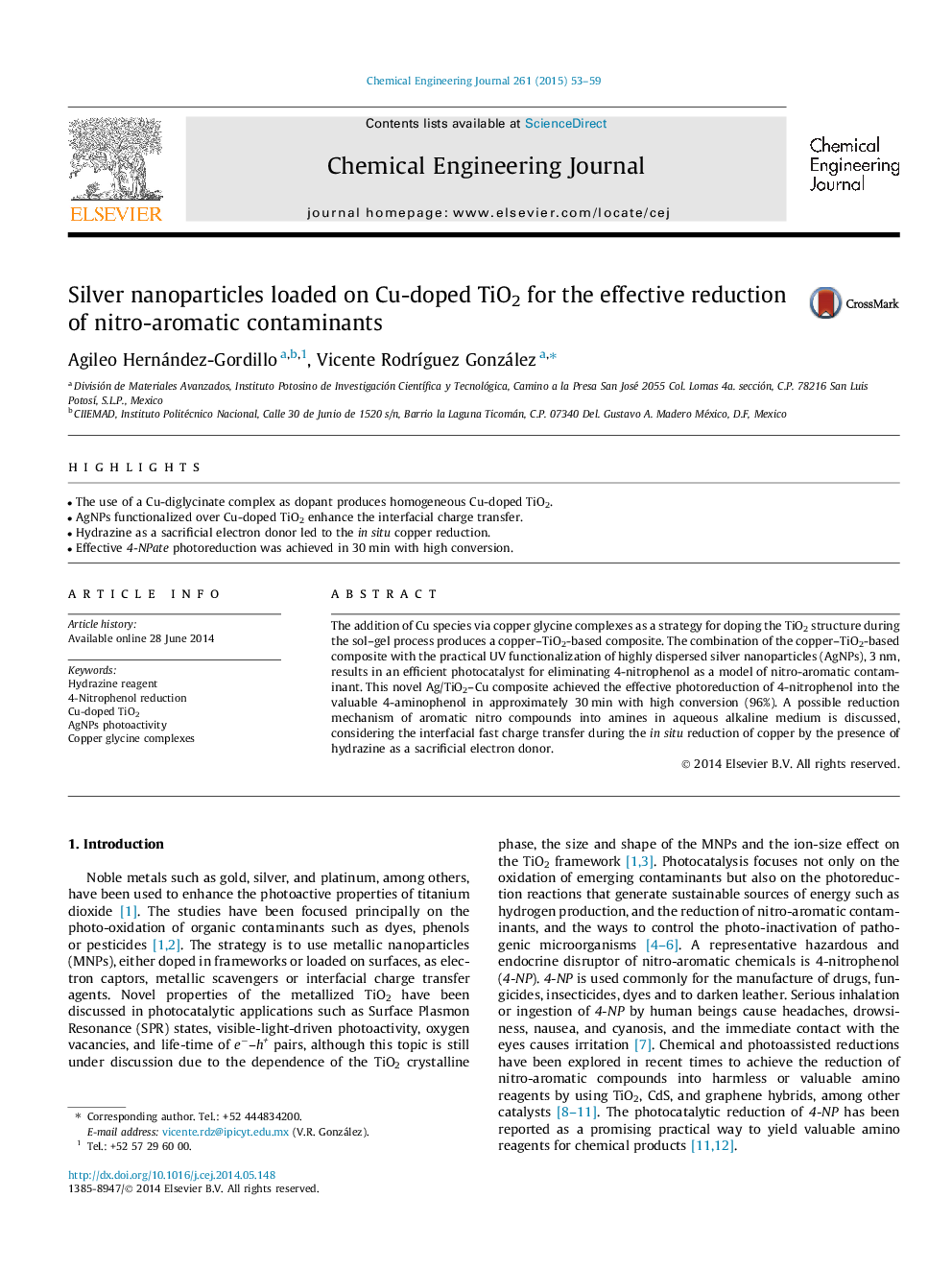| Article ID | Journal | Published Year | Pages | File Type |
|---|---|---|---|---|
| 146927 | Chemical Engineering Journal | 2015 | 7 Pages |
•The use of a Cu-diglycinate complex as dopant produces homogeneous Cu-doped TiO2.•AgNPs functionalized over Cu-doped TiO2 enhance the interfacial charge transfer.•Hydrazine as a sacrificial electron donor led to the in situ copper reduction.•Effective 4-NPate photoreduction was achieved in 30 min with high conversion.
The addition of Cu species via copper glycine complexes as a strategy for doping the TiO2 structure during the sol–gel process produces a copper–TiO2-based composite. The combination of the copper–TiO2-based composite with the practical UV functionalization of highly dispersed silver nanoparticles (AgNPs), 3 nm, results in an efficient photocatalyst for eliminating 4-nitrophenol as a model of nitro-aromatic contaminant. This novel Ag/TiO2–Cu composite achieved the effective photoreduction of 4-nitrophenol into the valuable 4-aminophenol in approximately 30 min with high conversion (96%). A possible reduction mechanism of aromatic nitro compounds into amines in aqueous alkaline medium is discussed, considering the interfacial fast charge transfer during the in situ reduction of copper by the presence of hydrazine as a sacrificial electron donor.
